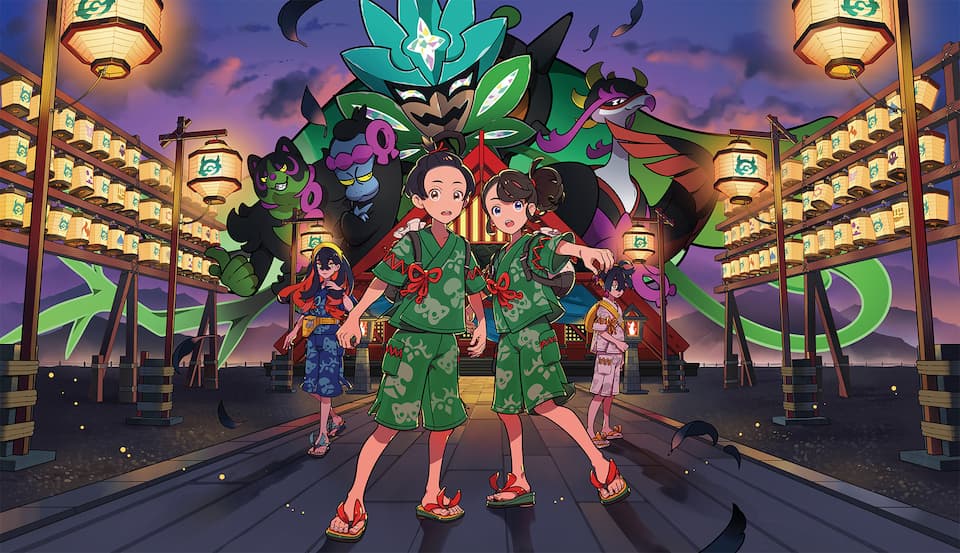Late last week, video game giants Nintendo and the Pokémon Company released The Hidden Treasure of Area Zero, Part One: The Teal Mask, a downloadable content (DLC) expansion for the popular Pokémon Scarlet and Violet games, exclusive to the Nintendo Switch. While most players seem to agree that this first expansion delivers reliably satisfying new content, not all the new additions are being met favourably.
The storyline behind the DLC revolves around your journey from Paldea to the Kitakami region as part of a school trip, where your adventures lead you to new friends, new foes and new Pokémon.
Most of the narrative in The Teal Mask occurs in Kitakami’s only town, Mossui. Everything from the architecture in the town to the Shinto-style inspired Yatai (or food stalls) was designed to resemble elements from small-town Japanese culture, elements that further extend beyond the town limits and into the rice patties and apple orchards, creating an atmosphere of peaceful tranquillity.
Although the story for The Teal Mask can be completed relatively quickly (it took me less than five hours of total playtime with a strong team of ‘mons), completing the game’s regional Pokédex will take a bit more time as the expansion adds a further two hundred pokémon for you to catch, including the introduction of 4 new legendary pocket monsters, Ogrepon, Okidogi, Munkidori, and Fezandipiti.
In February, shortly after The Hidden Treasure of Area Zero was officially announced by Nintendo, the Pokémon Company released promotional concept art showcasing the new creatures. Although the concept designs were an improvement (albeit just barely) over what you might see in the Pokémon anime, they left something to be desired. Still, with the DLC release date almost six months away, it was widely believed that the designs would be improved, a belief that proved to be mistaken.
What fans received are designs that feel more suited to Pokémon games appearing on the Nintendo DS as opposed to the Switch. The models seem flat with little texture or definition especially when compared to other contemporary game sprites in the series. These criticisms are not to say that the designs have no redeeming qualities (they do), or to imply that they detract from the overall enjoyment of the game (they do not), but rather they serve to highlight just how incredible many of the previous designs were. Despite this, Nintendo has very little cause for concern. Historically speaking, Pokémon fans can be very forgiving, as is evident by the success of Scarlet and Violet to begin with.
When the generation nine games were released late last year they were not nearly as polished as most of the franchise’s previous entries, having been shipped complete with bugs or glitches that, although not game-breaking, distracted from the many positive attributes of the titles. From game sprites skipping across parts of the screen, to environmental textures not loading properly, and issues with lag during online gameplay, there were abundant reasons for players to become frustrated.
Still, despite the myriad of glitches that initially plagued the games, Pokémon Scarlet and Violet has gone on to become one of the best-selling Nintendo Switch titles of all time, having sold over twenty-two million copies by June of this year, according to J. Clement, the research lead covering internet and gaming at Statista.
Final Verdict: Despite the quick gameplay and some questionable creature designs, The Teal Mask is a decent addition to the mainline game and worth purchasing.
Pokémon Scarlet and Violet are available now for purchase in both physical and digital forms, while The Hidden Treasure of Area Zero may be purchased digitally through the Nintendo eShop.
Meanwhile, The Indigo Disk, The Hidden Treasure of Area Zero, Part 2 is slated for release sometime this winter.

